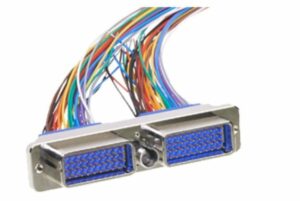 Cinch Connectivity Solutions has introduced a new range of shells, inserts and contacts designed to provide interconnectivity for aerospace applications such as UAVs (unmanned aerial vehicles). The new C-ENX interconnect solutions are ideal for routing power, signal, and data for avionic systems throughout the aircraft.
Cinch Connectivity Solutions has introduced a new range of shells, inserts and contacts designed to provide interconnectivity for aerospace applications such as UAVs (unmanned aerial vehicles). The new C-ENX interconnect solutions are ideal for routing power, signal, and data for avionic systems throughout the aircraft.
Designed to meet the requirements of ARINC 800 and European Standard EN 4644, the C-ENX family features a rectangle profile that provides a reduction in weight and size compared to the circular connectors currently used by the aerospace industry. This translates directly to operational cost savings over the lifetime of the aircraft.
Aerospace designers have already started transitioning to modular rectangular connectors, as they provide significant advantages over circular style connectors. As well as offering higher pin density and lower weight, the design allows for the blind mating needed for LRM/LRUs (line replaceable modules and units). The C-ENX line is available in single-, double-, triple-, and quadruple-cavity outlines for panel mount to cable, cable to cable, floating mount and panel mount to panel mount configurations.
The modular C-ENX family includes shells, inserts, contacts and backshells, with various options available to suit any UAV application. The shells utilize the same panel cut-outs throughout the product range. The modular design supports a more flexible and efficient assembly process, allowing manufacturers to outsource more of the cable assembly or to incorporate changes later in the design cycle. This also promotes longevity in service, by supporting simpler maintenance and more efficient upgrades.
Brad Taras, Product Manager at Cinch, commented: “Every ounce of weight in an aircraft represents an operational cost of approximately $5,000 over the lifetime of the aircraft. The C-ENX connector line provides a slim, completely modular and expandable solution that reduces size and weight, while increasing ease of use, which will deliver immediate and significant gains to aerospace manufacturers.”


















